Lisbon, the capital and biggest city in Portugal, is in the top of the most popular tourist destinations in Europe. The “city of the seven hills” has won the hearts of visitors from all over the world through a sumptuous fusion of tradition and modernity. Have you ever thought of what to see in Lisbon?
Here is the top 20 of the places to visit and what to see in Lisbon:
Sommaire
- Here is the top 20 of the places to visit and what to see in Lisbon:
- 1. Lisbon’s historic quarters
- 2. Lisbon’s viewpoints
- 3. Praça do Comércio
- 4. The Cathedral
- 5. National Pantheon
- 6. Carmo Convent
- 7. São Vicente de Fora Monastery
- 8. Graça Church and Convent
- 9. Museu Nacional de Arte Antiga
- 10. Lx Factory
- 11. Museum of Art, Architecture and Technology (MAAT)
- 12. Belém National Palace
- 13. Hieronymites Monastery (Mosteiro dos Jerónimos)
- 14. Tower of Belém (Torre de Belém)
- 15. Ajuda National Palace
- 16. Monsanto Forest Park
- 17. Fronteira Palace
- 18. Lisbon Zoo
- 19. Cristo Rei National Sanctuary
- 20. Oceanário
- Itinerary to visit the most beautiful places in Lisbon
- Where to sleep in Lisbon
- Where to eat in Lisbon
- Traditions and Festivities
- When to visit Lisbon
Disclosure: This post may contain affiliate links, meaning i get a commission if you decide to make a purchase through my links, at no cost to you. Please read my disclosure for more info.
1. Lisbon’s historic quarters
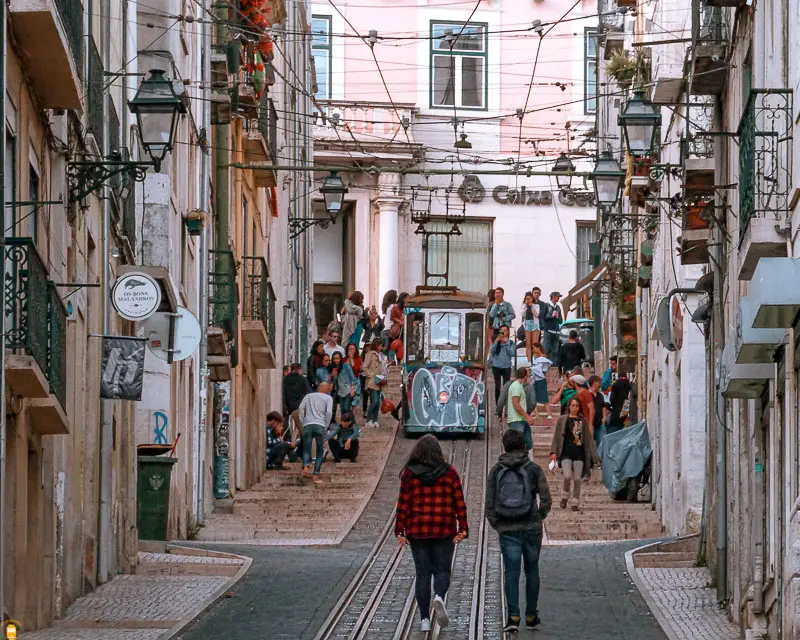
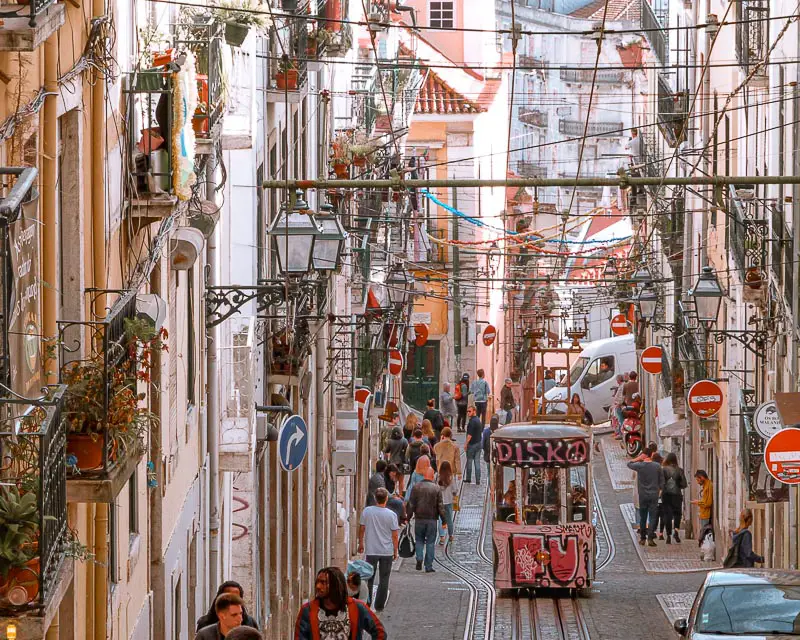
Most of the authenticity you’ll find in Lisbon is at its historic quarters. There, you’ll get to know the most genuine people, taste the most typical meals and, why not, take the opportunity to hear the real Lisbon fado.
The beautiful Alfama quarter is one of the oldest in the city and is one of those places you can’t forget when making a list of what to see in Lisbon.
Located in the heart of the capital, this is definitely one of the most typical locations to discover the Portuguese culture. The narrow streets, flowered balconies, restaurants, fado and daily life scenes are part of the tour. Furthermore, you can ask around – surely you’ll find someone that can tell you what to see in Lisbon.
Tip: take the tram nº 28 to visit Alfama or walk there (wear appropriate footwear). Make a stop at one of many old taverns and enjoy a meal of fresh grilled fish.
Another quarter you should discover in the Portuguese capital is Bairro Alto. The quarter has two faces: ordinary during the day and classy at night. There are many bars, restaurants, bookshops, discos and a superb panoramic view.
Apart from these reasons, you should know that Bairro Alto is also very welcoming and everyone is eager to help you out if you need any information.
Tip: take one of these two elevators: the Ascensor da Bica or the Elevador da Glória.
There are other historic quarters in Lisbon worth a visit but these are definitely two of the most authentic and genuine.
Information: I suggest you book this tuk-tuk tour that will take you to discover the beautiful historic quarters of Lisbon. On this pleasant two-hour guided tour, you will have the opportunity to visit the historic centre, where Lisbon was born, once occupied by Romans and Moors.
Discover the genuine quarters of Alfama, Chiado and Bairro Alto and, along the way, also admire the narrow streets and unmissable points of interest such as the cathedral Sé Catedral, the National Pantheon, the monastery Mosteiro de São Vicente de Fora. Also know that you will stop at the viewpoints that offer the best views over the city.
As an alternative to the above-mentioned activity, you can choose this late-afternoon walking tour through the historic quarters of Alfama and Baixa and enjoy a magnificent dinner in a fado house that will give you the possibility to watch live this musical genre so unique and special.
2. Lisbon’s viewpoints
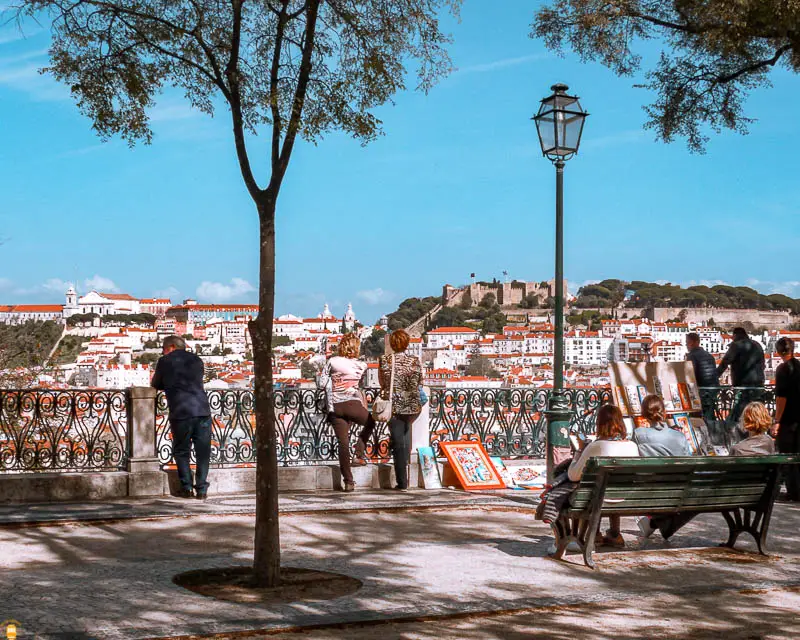

Lisbon is also known as the “city of the seven hills” and, maybe because of that, there are many viewpoints scattered throughout the city offering its visitors some of the best views over the Portuguese capital.
Stroll through the historic quarters and stop at the viewpoints to admire the city and its monuments like São Jorge Castle and the National Pantheon. Among the favourite viewpoints, I must point out the ones of Senhora do Monte, Portas do Sol, São Pedro de Alcântara and Santa Catarina.
3. Praça do Comércio

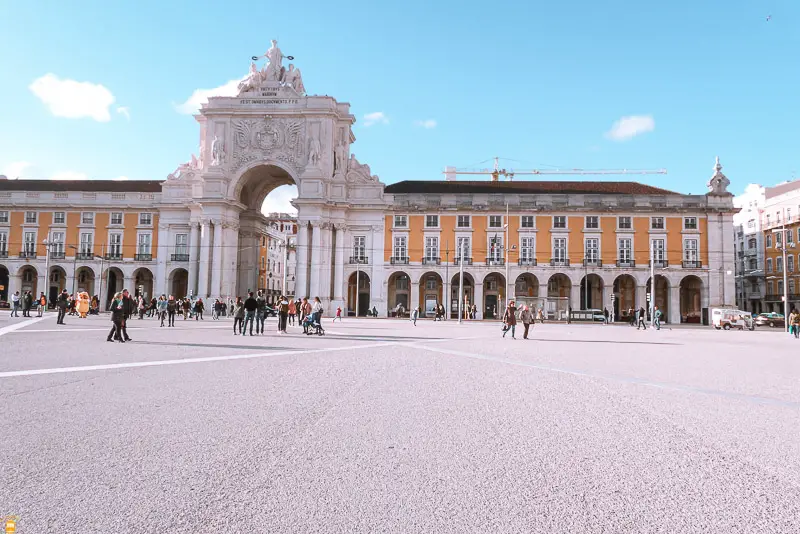
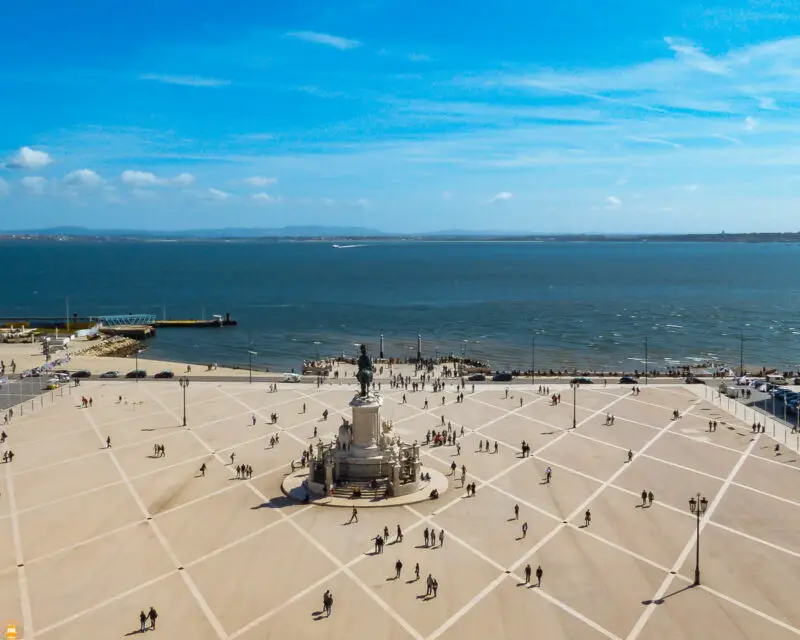
The square Praça do Comércio, also known as Terreiro do Paço, is one of the most famous places in Lisbon and is located in Baixa Pombalina (downtown), facing Tagus river. This is definitely a place to consider when thinking of what to see in Lisbon.
It was here that, throughout centuries, many heads of state disembarked for meetings with the Portuguese kings and queens.
But other important historical events took place at this location such as the destruction caused by the major earthquake of 1755 and the regicide of D. Carlos and his son, in 1908, that marked the beginning of the end of monarchy in Portugal.
4. The Cathedral
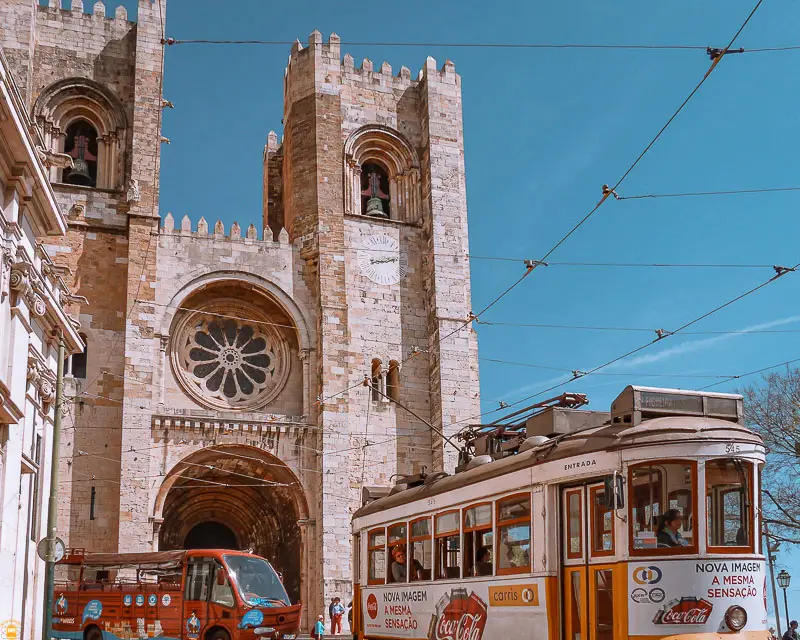
The Cathedral of Lisbon holds the title of oldest church in the Portuguese capital, having been built in the second half of the 12th century, right after Lisbon being conquered from the Moors.
As years went by, this cathedral was enriched with different architectonic styles, with Romanesque, Gothic and Baroque traits and it was here that some Portuguese started to be buried.
Unfortunately, the major earthquake of 1755 destroyed several original parts of the cathedral and, because of that, a reconstruction was in order. In the beginning of the 20th century, refurbishment works returned some of the medieval beauty to this building.
5. National Pantheon
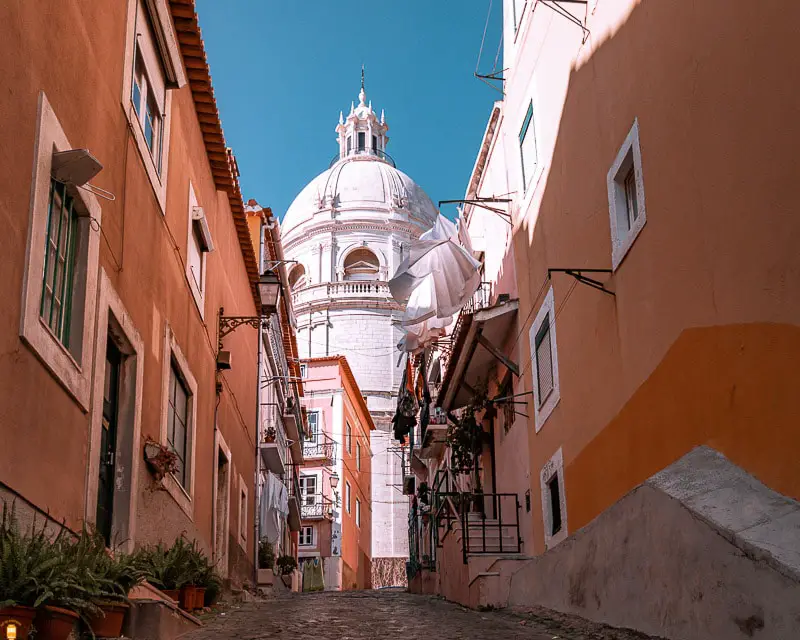
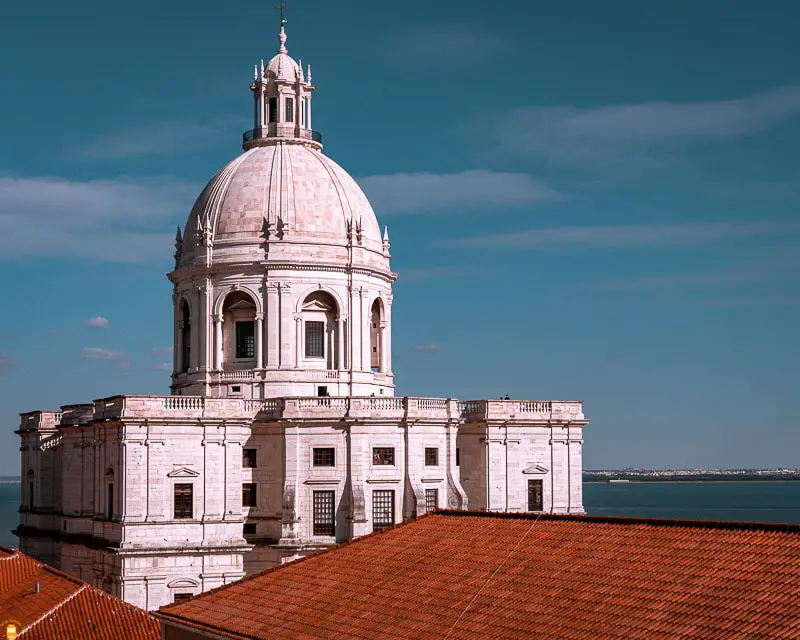
Considered one of the most emblematic buildings in Lisbon, the National Pantheon is the last residence for many important Portuguese historical figures of different areas such as Almeida Garrett, Amália Rodrigues and Eusébio.
Apart from the tombs of presidents, writers and others, you’ll find here some cenotaphs of other Portuguese heroes like D. Nuno Álvares Pereira, Henry the Navigator and Pedro Álvares Cabral.
6. Carmo Convent
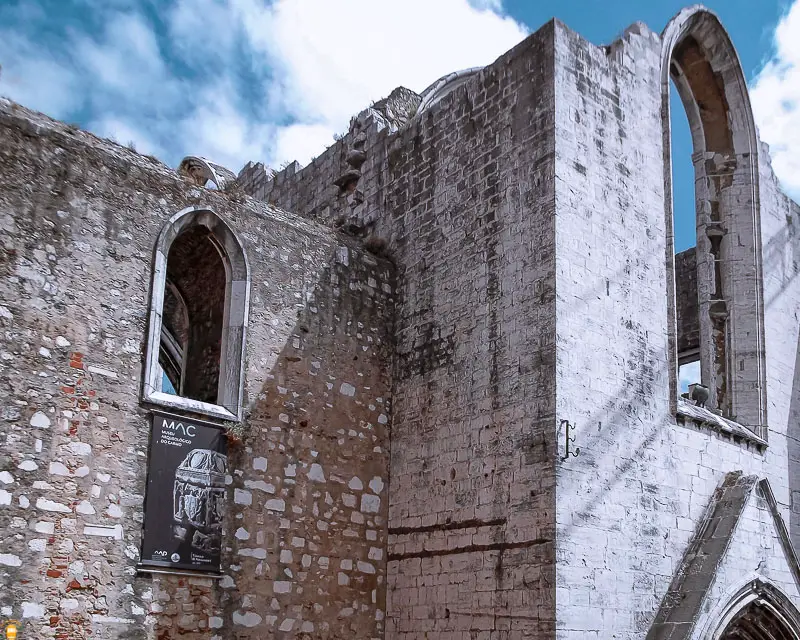
Carmo Convent is located in the historic centre of Lisbon and is in ruins. However, it is a place you’ll definitely want to visit since it is one of the memories the city still has from the 1755 earthquake that destroyed most part of the city.
This Gothic-style building underwent some reconstruction works but they stopped when religious orders were banished from Portugal during the 19th century – from this reconstruction remains the pillars and the arches from the nave.
At this location you’ll also find Museu Arqueológico do Carmo, a museum where several pieces stand out, from Pre-History to the contemporary era, including the beautiful Gothic tomb of king D. Fernando I.
7. São Vicente de Fora Monastery
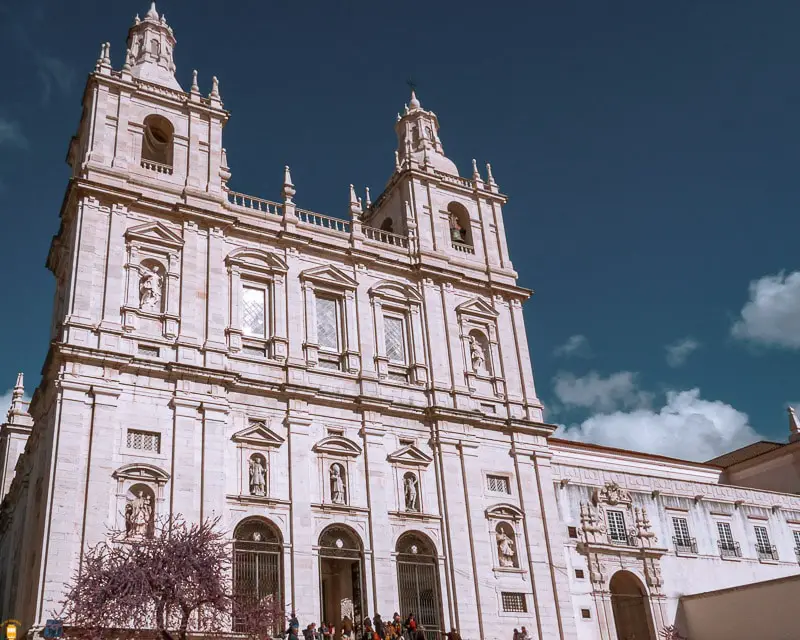
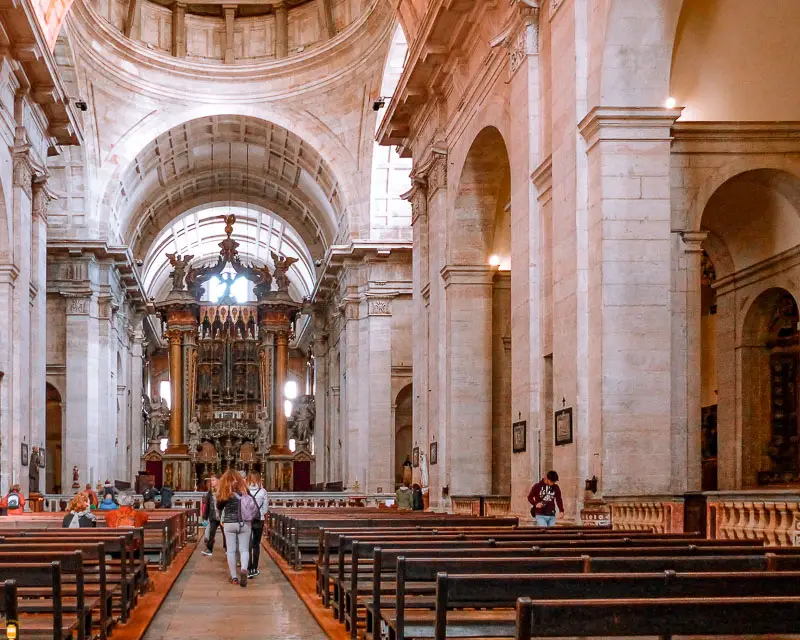


São Vicente de Fora Monastery was built between the 16th and 17th centuries, during the Philippine Dynasty, and is considered as one of the most important examples of the Mannerism style in Portugal, despite having Gothic and Baroque features too. Here you’ll also find one of the most beautiful glazed-tile collections in the country.
This monastery is located at a place where another monastery existed before with the same name and commissioned by king D. Afonso Henriques as a way for him to thank the conquest of Lisbon from the Moors, in the mid-12th century.
Today, this Portuguese monument is also classified as a pantheon and here you’ll find tombs of most of the cardinal-patriarchs of Lisbon as well as kings, princes and infantes (children of kings and queens we weren’t firstborn) from the Bragança Dynasty, the last Portuguese Royal House.
8. Graça Church and Convent
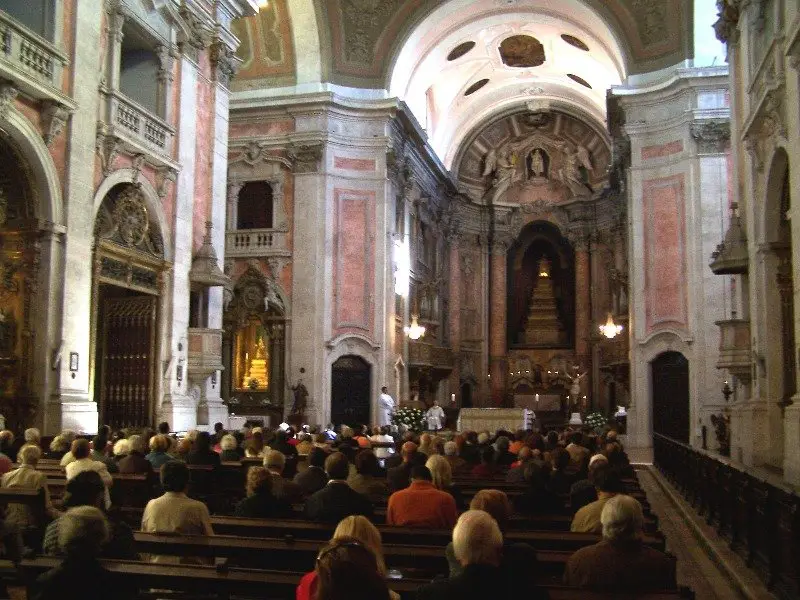
This building, classified as a Portuguese monument, was built in the 13th century but was rebuilt and restored after the 1755 earthquake that caused destruction throughout the capital.
In this religious set, the Mannerist, Baroque and Rococo features stand out, giving a unique and wonderful charm to this monument and dazzling those who pass by this place. Take the opportunity to admire the painted ceiling and the amazing glazed-tile panels.
Before you leave this area, enjoy one of the most wonderful views over the city of Lisbon in the beautiful Sophia de Mello Breyner Andresen viewpoint.

9. Museu Nacional de Arte Antiga
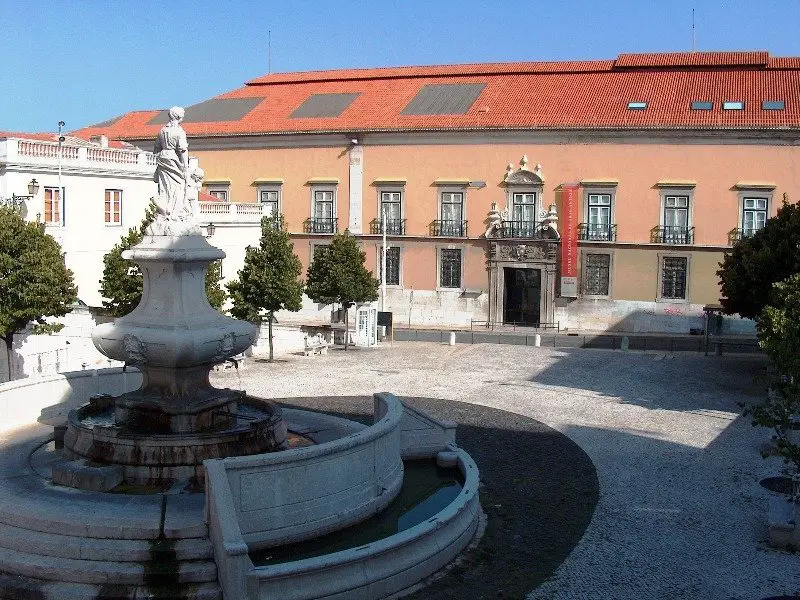
The Museu Nacional de Arte Antiga (Ancient Art National Museum) holds the status as one of the most visited museums in Portugal and here you’ll find works of art since the beginning of Portugal as a country in the 12th century until the 19th century.
This museum was inaugurated in 1884 and has a 40 000-piece collection, some of which considered as “national treasures” in the most different areas such as painting, sculpture and decorative arts originating not only from Europe but also from Africa and Asia.
Save some time to explore and admire works of art in this amazing museum, one of the Lisbon museums you should visit.
10. Lx Factory
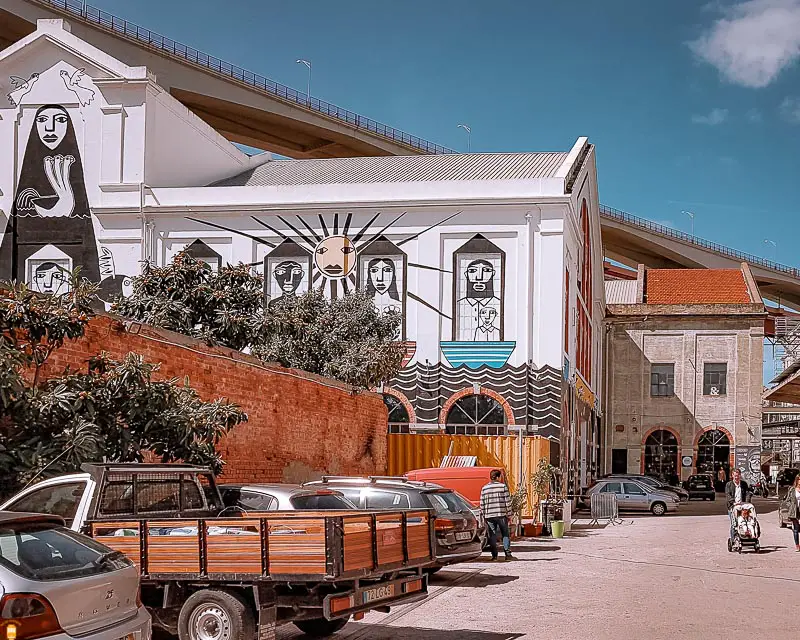
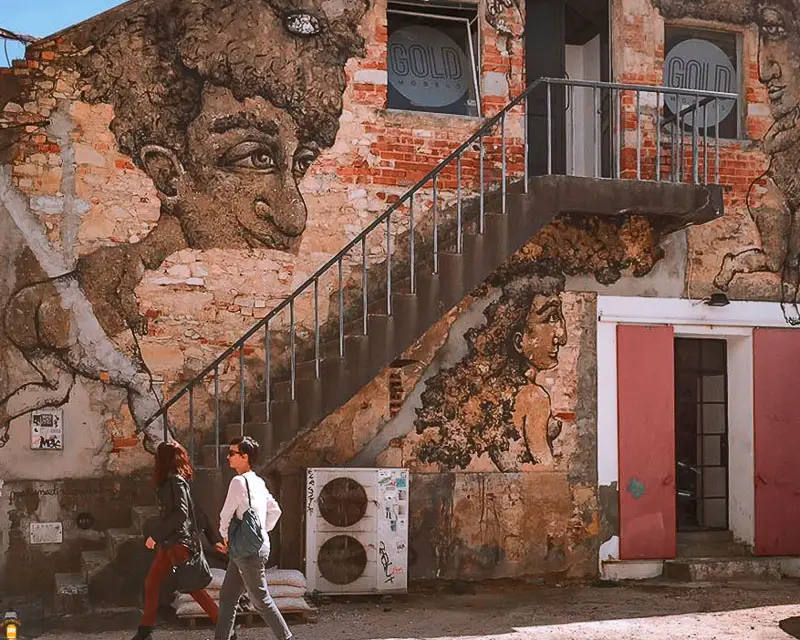
Located in the beautiful Alcântara quarter, Lx Factory is one of the places to discover in the Portuguese capital and there are several reasons to go visit this place.
Know that you can enjoy some of the most beautiful views over Tagus river and 25 de Abril bridge at this place, especially at an open area with panoramic terrace in the 4th floor, at the restaurant Rio Maravilha – definitely worth your while!
Apart from the beautiful views, don’t miss the opportunity to explore the remaining area of Lx Factory and discover other amazing places with unique designs such as restaurants and bars, a bookshop, a kiosk and even an escape room.
- Site: www.lxfactory.com
11. Museum of Art, Architecture and Technology (MAAT)
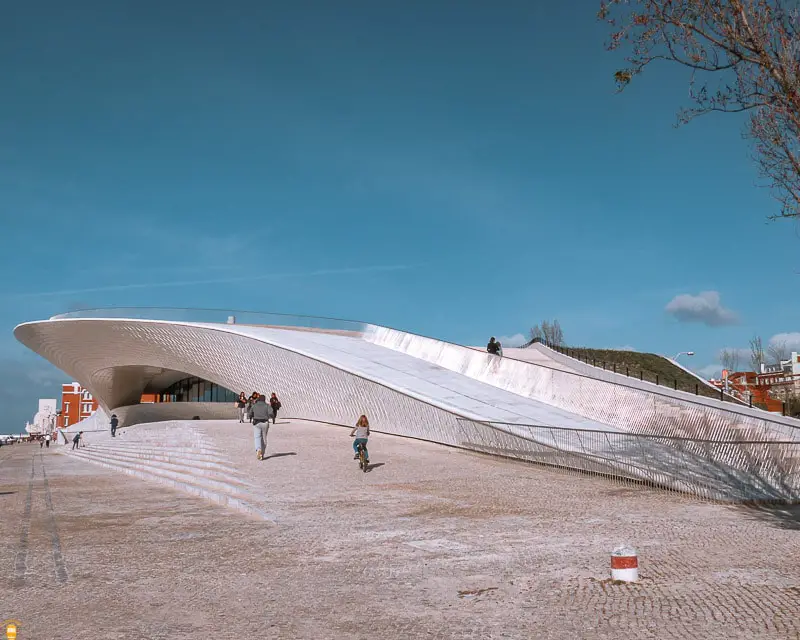
Located in Belém quarter and close to other points of interest, this museum is the newest museum in Lisbon and is one focused on contemporary art.
Constituted by two buildings, property of Fundação EDP, MAAT transformed the cultural landscape of the Portuguese capital and it intends to offer its visitors a modern and sophisticated collection.
Take the opportunity to stroll through the landscaped space close to the riverfront and, as a curiosity, know that you can cross the beautiful pedestrian bridge over the busy Avenida Brasil.
- Site: www.maat.pt/en
12. Belém National Palace
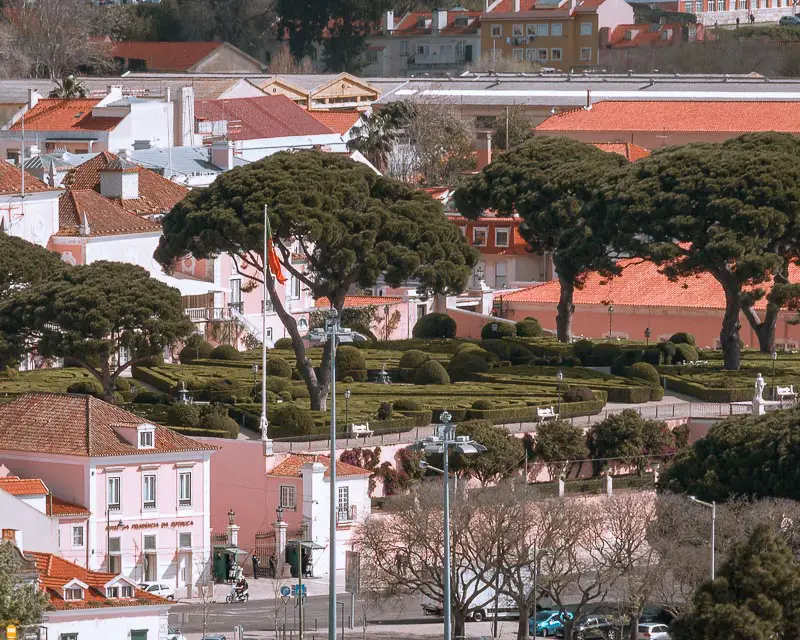
This magnificent palace was built in the end of the 16th century in Baroque and Neoclassical styles and is composed of a central building facing Tagus river and some beautiful patios and gardens, among others.
Perhaps because this palace is the official residence of the President of the Portuguese Republic, it is one of the most exclusive palaces in the country and people can only visit it on Saturdays (with a guide) depending on presidential agenda.
If you can’t explore the palace, you can visit Museu da Presidência (the Presidency Museum) where you can discover more about the life and work of Portuguese presidents but more – you can also admire documents, personal objects and diplomatic gifts received by the presidents.
- Site: www.presidencia.pt
13. Hieronymites Monastery (Mosteiro dos Jerónimos)

In 1502, King Manuel I decided to order the construction of this huge and religious monument. Located in Belém historic quarter, this magnificent building mirrors the richness of the Portuguese discoveries all over the world in the 16th century.
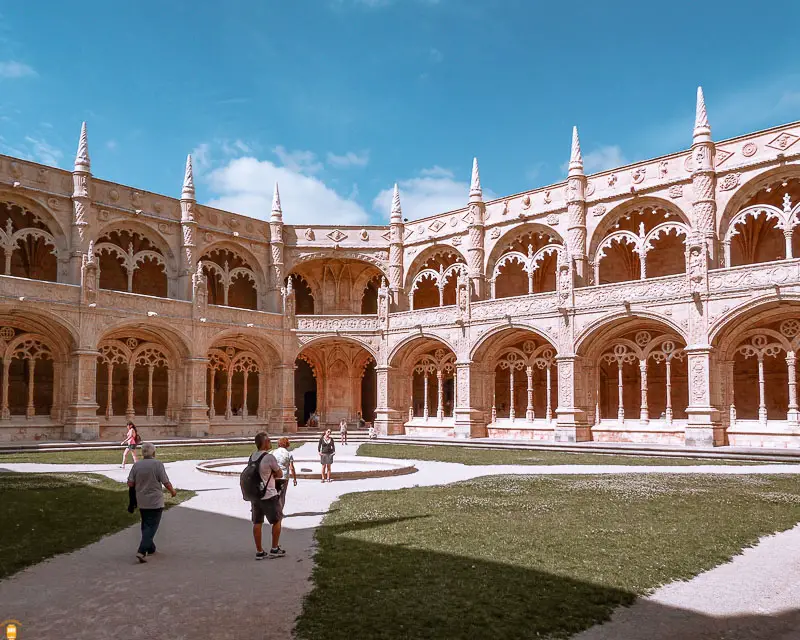
Like Tower of Belém, this monument is also one of the most important symbols of Manueline style and it is today one of the most visited places in Portugal. Apart from its architectural beauty, you’ll have the opportunity to admire the amazing tombs of Portuguese figures such as Camões, Vasco da Gama and D. Manuel I.
14. Tower of Belém (Torre de Belém)
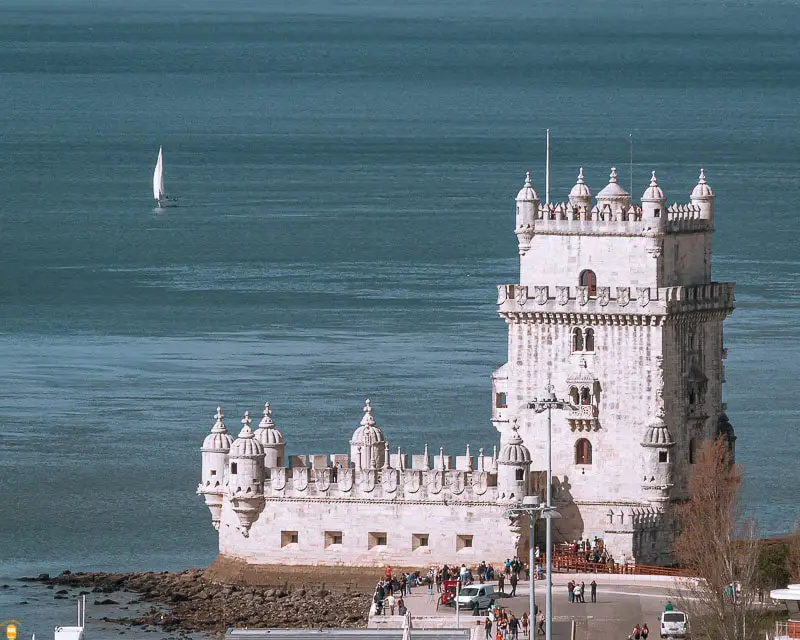
When you think of what to see in Lisbon, one of the first things that comes to mind is Tower of Belém. UNESCO World Heritage Site since 1983, Tower of Belém was built from 1515 to 1521 to watch over Lisbon’s harbour thus controlling the passage of ships.
About 30 metres high, Torre de Belém is one of the most beautiful examples of Manueline-style architecture, with its very characteristic traits such as the cross of the Order of Christ, the armillary sphere and naturalist elements. From here you can enjoy an astounding view over Tagus river.
Tip: for about 12 € per person, some companies offer a boat trip from Cais do Sodré to Tower of Belém.
Information: do you want to visit Belém and discover the place from where some of the great Portuguese navigators set sail to new worlds? If so, book this activity and go on a two-hour guided tuk-tuk ride to the time of the Portuguese Discoveries.
In Belém, you will have the opportunity to discover the landmarks of Lisbon, Mosteiro dos Jerónimos and Torre de Belém, both listed by UNESCO as World Heritage Sites. There are other points of interest to admire, but know that this tour will be even more wonderful after tasting the famous pastéis de Belém.
To make your stay one to remember, board a luxury sailboat and admire part of downtown Baixa Pombalina and Belém as well as its points of interest. However, what will make this tour unforgettable is the fact that it is done in the late afternoon, when you can enjoy a magnificent sunset while enjoying snacks and good wine.
15. Ajuda National Palace

Located in the western part of the city, this is one of the most beautiful palaces you will find in Lisbon.
Despite its construction has started in the end of the 18th century, only now, in the 21st century, the project comes to an end with the conclusion of the west wing of the building where the Portuguese Royal Treasure will be kept.
Apart from the architectural beauty of this Portuguese monument, know that here you’ll find one of the most beautiful museums in Lisbon (and in the country) with wonderful ceramic, sculpture, painting, jewellery collections and much more!
16. Monsanto Forest Park

Monsanto Forest Park is considered to be the green lung of Lisbon and the biggest Portuguese forest park with an area of 900 hectares.
As you would expect, this place has the ideal conditions for sports activity and much more – here, you’ll find bike paths, walking routes and football, basketball and tennis areas.
You can take the opportunity to go for a walk with your family and friends and have a picnic at one of the picnic areas; you can also go to one of the viewpoints and enjoy the wonderful views over the Portuguese capital.
17. Fronteira Palace
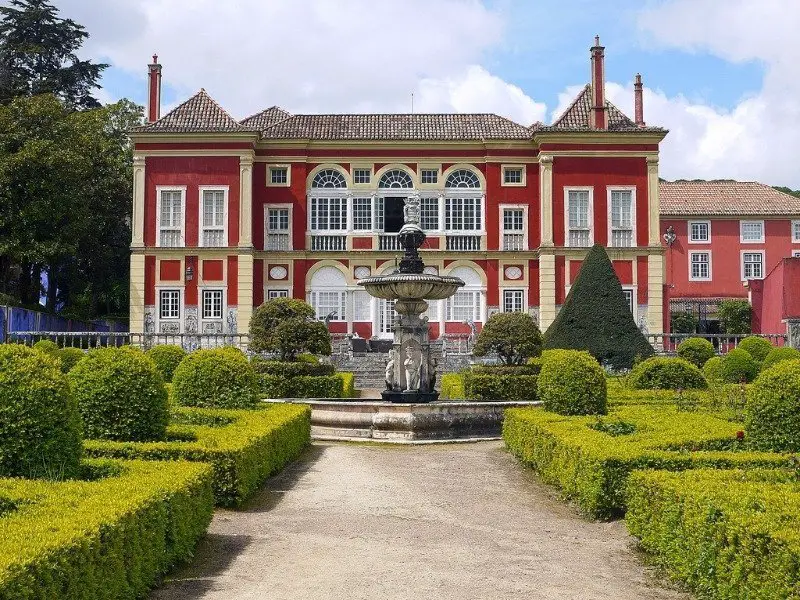
Built in the second half of the 17th century, Fronteira Palace is one of the last treasures yet to be found in Lisbon.
The interior of this magnificent building can only be visited with a guide so that you can fully get to know the palace’s history and admire some rooms and the library. Even though this palace is still inhabited, you can get a glimpse of some of the restricted areas.
Despite its exquisite interior, the surrounding area of the palace is also worth seeing and there you’ll find gardens decorated with beautiful statues and fountains and amazing glazed-tile panels. Definitely a place to consider when you visit Lisbon!
- Site: www.fronteira-alorna.pt
18. Lisbon Zoo
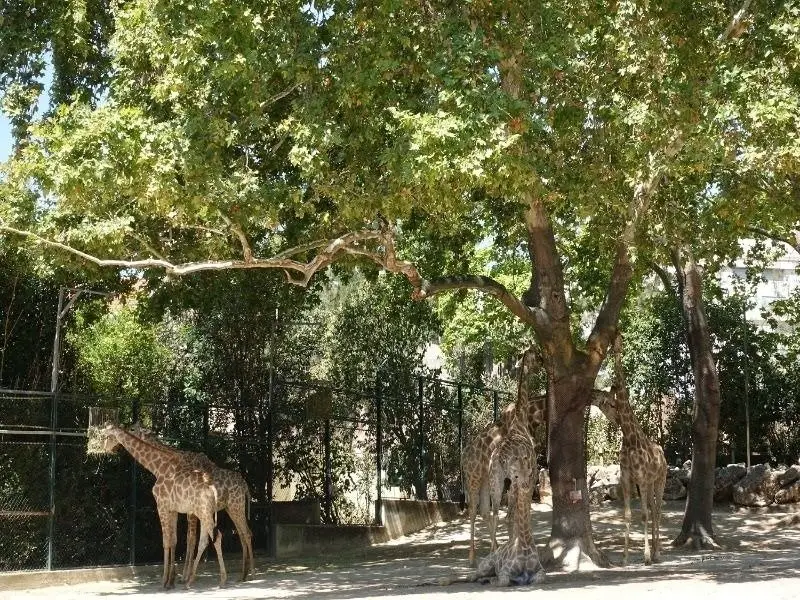
Lisbon Zoo is one of the favourite places of people visiting the city, and is mainly adored by children. In this 94 000 m2 space you’ll surely have an amazing day, one to remember!
In its more than 130 years of existence, the zoo has reinvented itself throughout the times and built several facilities so that the different species, that arrived from all over the world, could be as comfortable as possible.
If you don’t know what to see in Lisbon, then go explore this zoo! Apart from the adorable animals, know that here you’ll find a picnic area, a cable car and a mini-train that take the visitors on a different tour through the zoo, without getting too tired. You should also know that you can explore this zoo in the company of a guide that will tell you some of the secrets of this place.
- Site: www.zoo.pt
19. Cristo Rei National Sanctuary
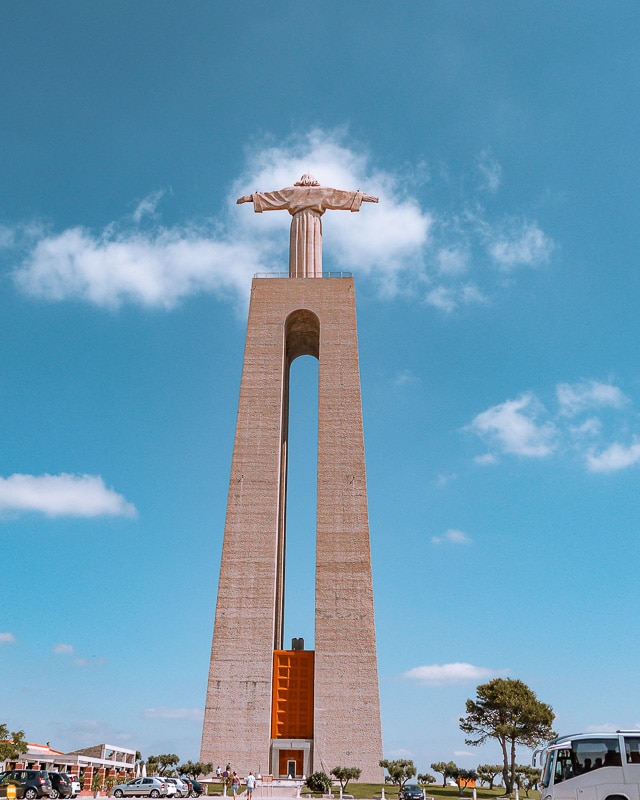
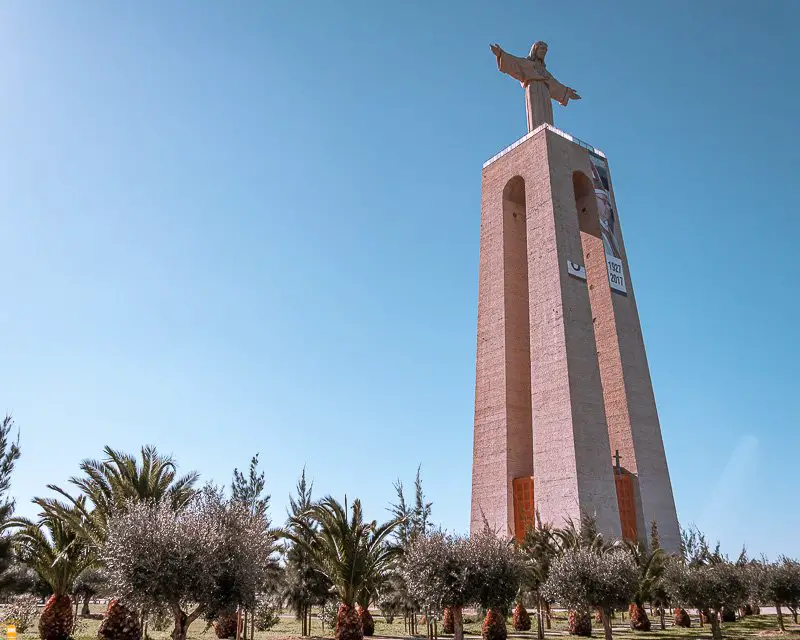
Located in Almada, on the south bank of Tagus river, Cristo Rei is a sanctuary and a religious monument representing the Sacred Heart of Jesus. Inspired by Rio de Janeiro’s Christ Redeemer, this wonderful 110-metre high building was inaugurated in 1959.
This sanctuary and the statue, in particular, welcome with open arms people who want to visit Lisbon region and here you can also enjoy this place that is one of the most beautiful viewpoints offering views over the Portuguese capital.
- Site: www.cristorei.pt/en
Tip: take the opportunity of getting to know the glamorous streets of Almada.
Information: take the opportunity to book this activity and discover the two Tagus river banks, always with fabulous views over the Portuguese capital. Start in Belém, where you can admire Mosteiro dos Jerónimos and Torre de Belém. Then, head to one of Lisbon’s most recent viewpoints, located right in the 25 de Abril bridge, the Pilar 7 viewpoint, where you can also enjoy a virtual reality experience.
Next, cross the bridge and discover the south bank of Tagus river, where you will literally reach the high point of this guided tour , the National Sanctuary of Cristo Rei. There, you can climb to the top of the statue’s pedestal, which welcomes Lisbon’s visitors with open arms, and enjoy the magnificent views that extend for several kilometres in all directions. A must see!
20. Oceanário

The Oceanário of Lisbon is definitely one of the cultural buildings that attract more visitors in the whole country and has been considered as the best aquarium in the world on different occasions. It was inaugurated in 1998, just in time for Lisbon’s Expo ’98, and its mission is to raise awareness about the wonderful world of the oceans and species living there.
Today, the Oceanário is composed by two buildings connected by a long corridor decorated by a 55 000 glazed-tile panel. Here you can admire temporary and permanent exhibitions and, of course, get to know all of its beautiful “residents”.
- Site: www.oceanario.pt/en
Necessary days to visit Lisbon: 4 days
Itinerary to visit the most beautiful places in Lisbon
If you are visiting Lisbon and your stay is in some accommodation located in the historic centre, I suggest you go on foot to the places up to point 8 of this article. It will be a pleasant walk, but with some ups and downs so I suggest you to wear comfortable shoes.
By walking along the streets and alleys, you will feel the true authenticity of Lisbon’s historic quarters as well as the authenticity of its residents.
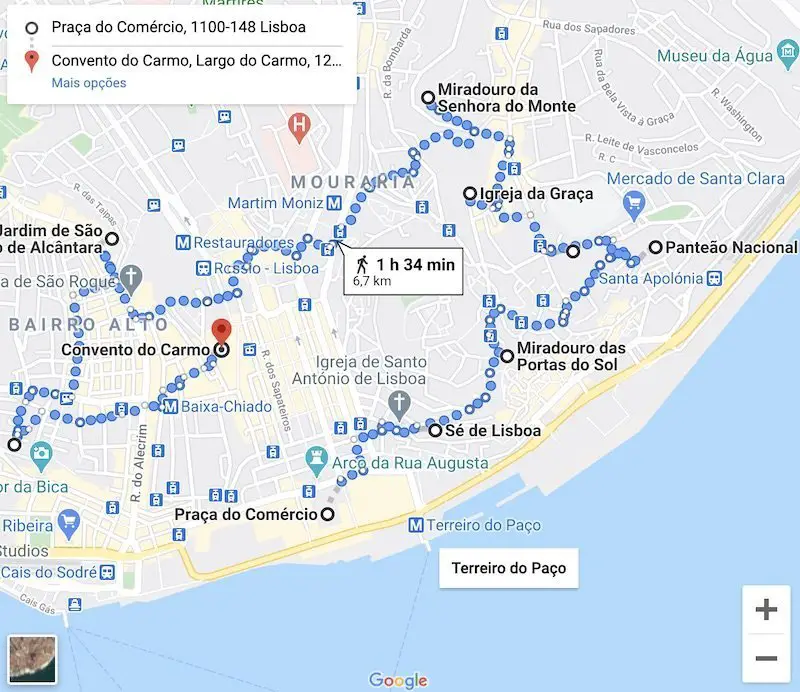
If you are staying outside the historic centre, then the best way to get there will be by metro, leaving at Terreiro do Paço station to start your tour at Praça do Comércio (or at Baixa-Chiado station, if you want to start at Convento do Carmo). To access the map of the metro network, click here.
After visiting downtown Baixa Pombalina, some of the historic quarters and the best viewpoints, the next day will be to visit other points of interest, starting with the Ancient Art National Museum. To do this, you can take the tram 15E at Praça do Comércio and enjoy a ride on one of the most characteristic means of transportation in the city.
For a bus trip, you can take the bus 714 or the bus 728 and hop off at the stops at Rua das Janelas Verdes or Cais da Rocha respectively.
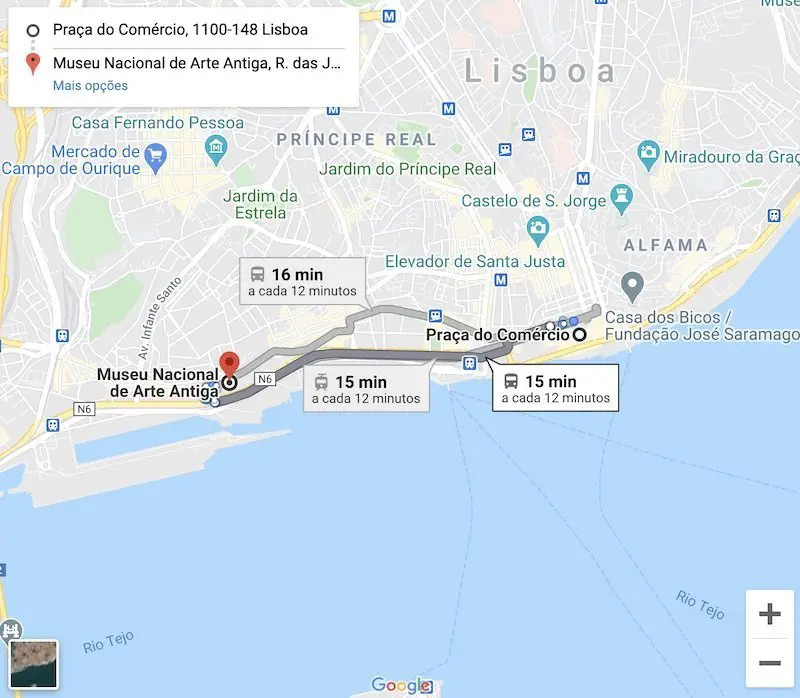
To go to LX Factory, you can take the tram 15E or the bus 714 again and hop off at the Calvário stop.
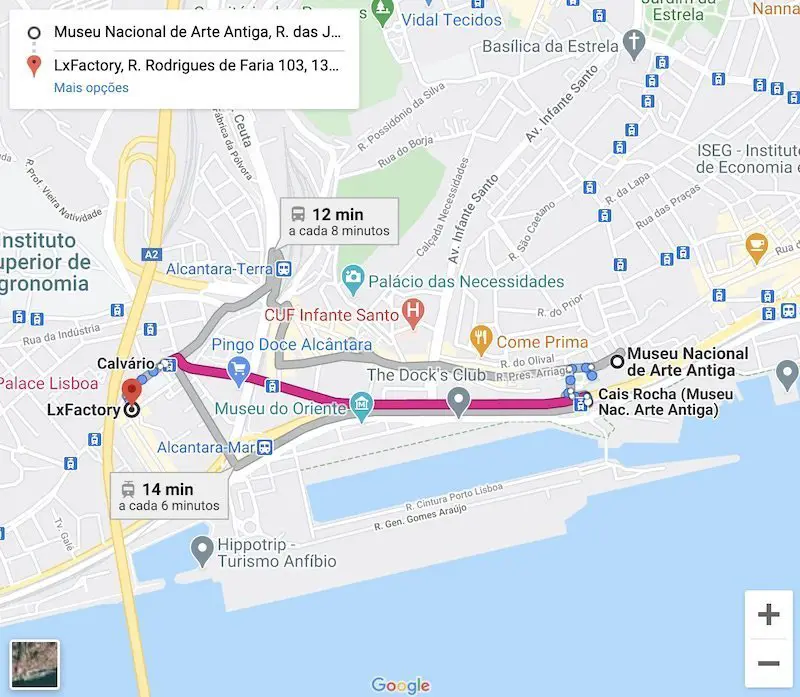
After visiting LX Factory, head to Belém, one of the most touristy and most beautiful areas in Lisbon. There you can find the next places to visit from my list: the Museum of Art, Architecture and Technology (MAAT), Belém National Palace, Hieronymites Monastery and the Tower of Belém.
To get from LX Factory to MAAT, take the tram 15E or the bus 714 again and hop off at the Altinho stop. Then, you just need to take a short five-minute walk to the museum.
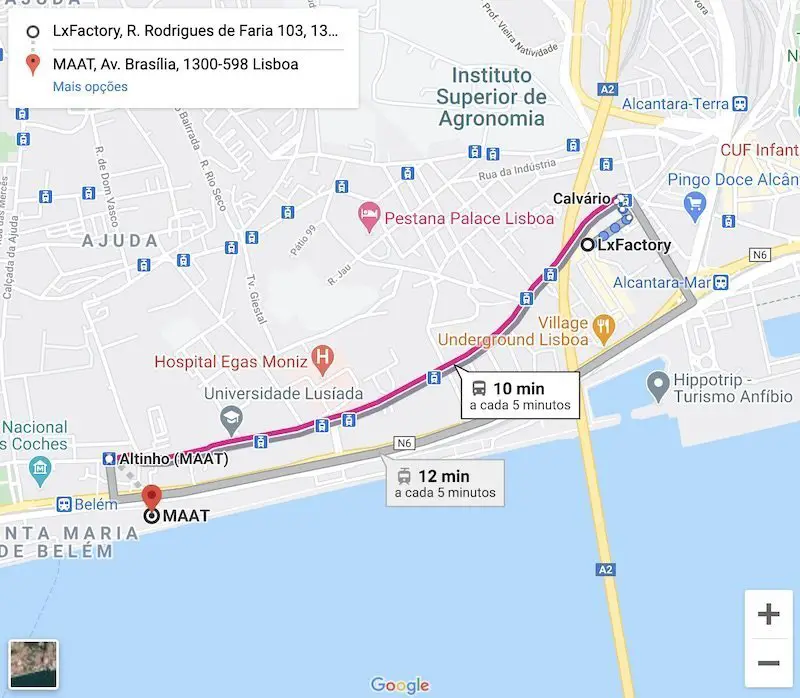
For the next points of interest, I recommend that you go on foot in order to enjoy the architecture, the landscape and the authenticity of this historic quarter. Make a stop at the bakery Confeitaria Pastéis de Belém, the original production site for the famous and tasty pastéis de Belém, also known as pastéis de nata (a Portuguese egg tart pastry). Don’t miss this opportunity!
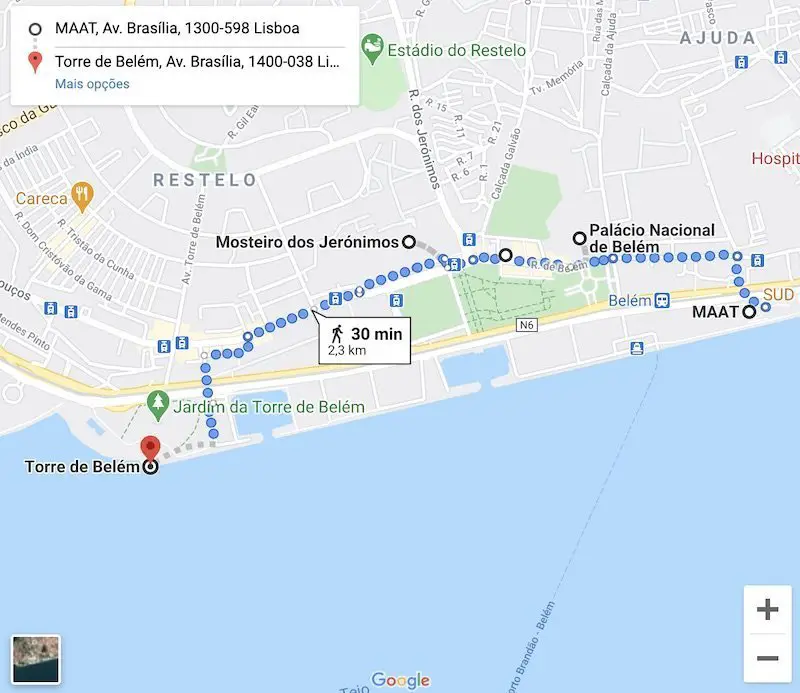
After visiting the monuments classified by UNESCO as World Heritage Sites (Hieronymites Monastery and the Tower of Belém), take bus 729 at the square Largo da Princesa stop and get off at the Ajuda stop, located 500 metres away from the Ajuda National Palace.

If you want to visit this wonderful place the next day, then take the bus 760 at the square Praça do Comércio and get off at the Palácio da Ajuda stop, right in front of the monument.
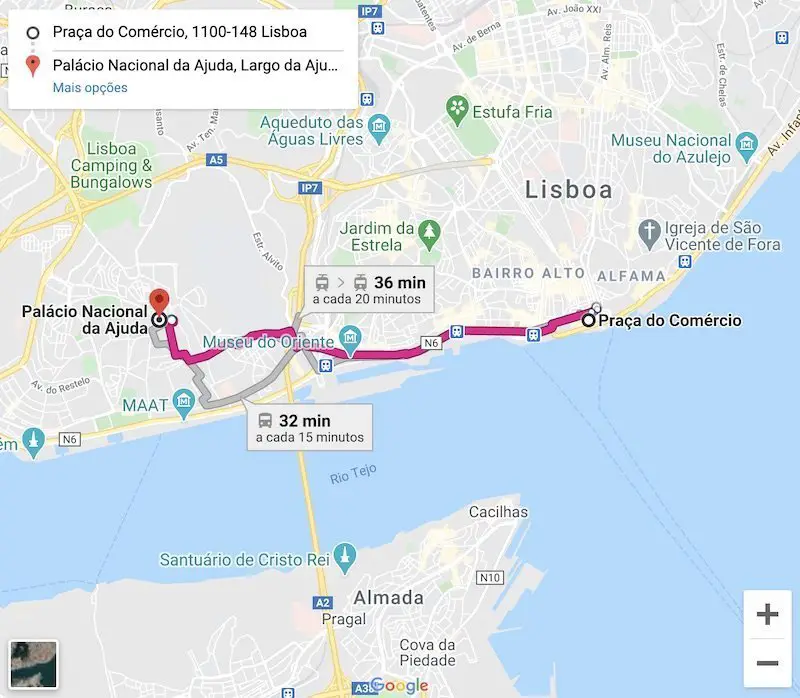
From the Ajuda National Palace to the forest park Parque Florestal de Monsanto, you will have to take the bus 729 at the Ajuda stop and go to the Estádio Pina Manique stop.
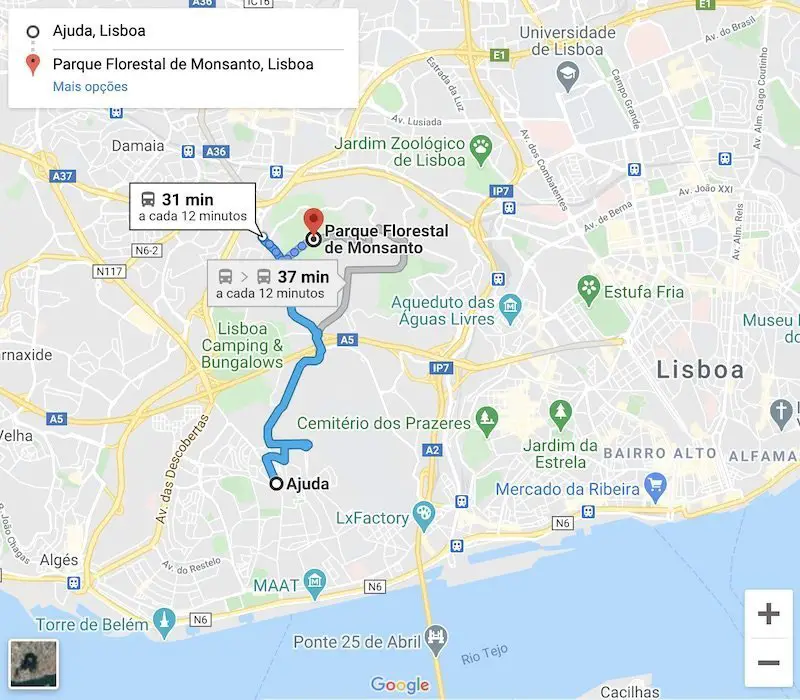
From Parque Florestal de Monsanto to the beautiful Fronteira Palace, it is about a 2 km walk that you can take in order for you to admire the landscape and enjoy the fresh air present in this area of the city. From the palace to the Lisbon Zoo it is a few minutes walk, but it will be worth it!
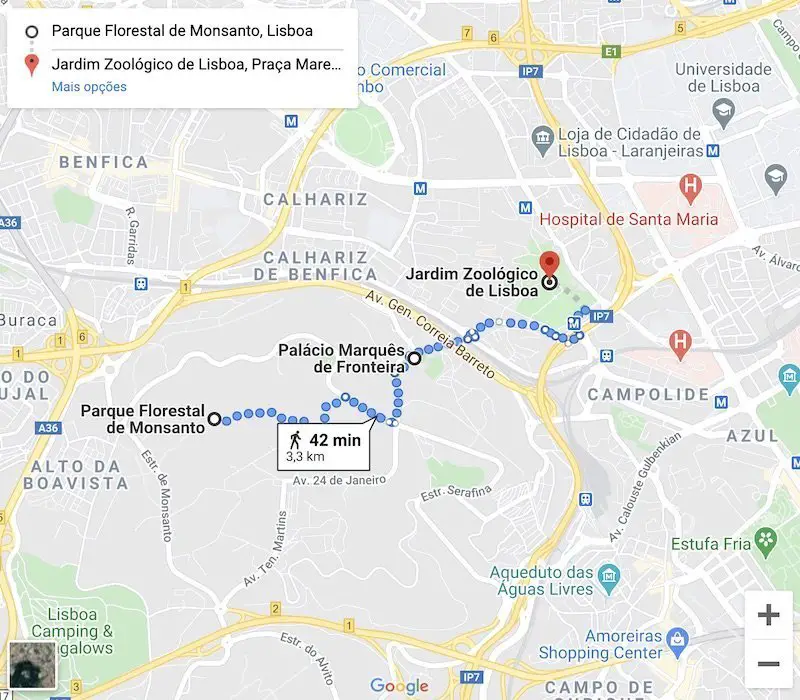
Do you want to visit the magnificent Cristo Rei National Sanctuary? Then head to the pier Terminal Cais do Sodré and take the ferry to Cacilhas, on the south bank of the Tagus river. There, take the metro to Almada station and from there to the sanctuary it is a short 1 km walk.
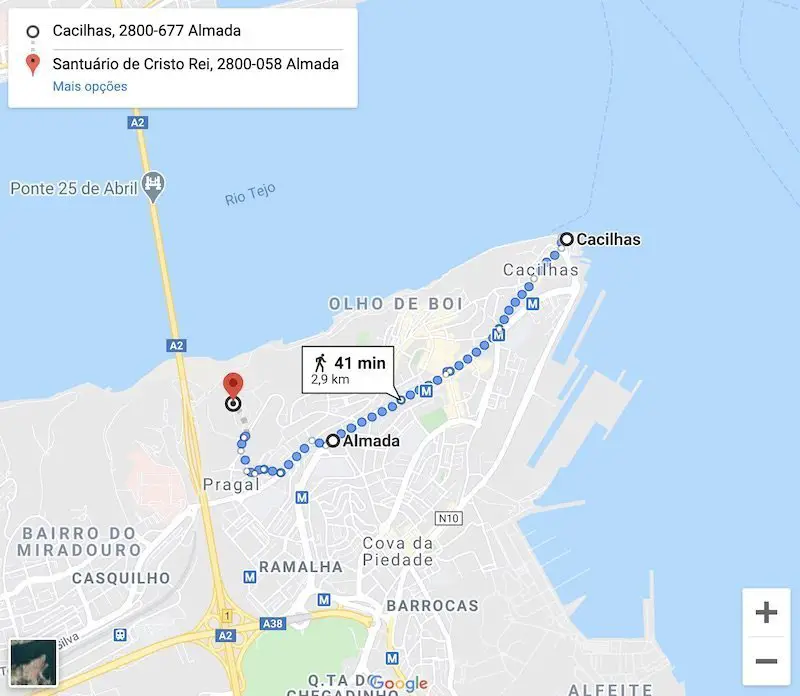
Alternatively, you can take the bus 101 which will drop you off at the stop in front of the sanctuary.
Finally, to visit the last point of interest in my top, take the bus 728 at Praça do Comércio and go towards Oceanário de Lisboa, on a beautiful 35 minute-trip side by side with Tagus river.
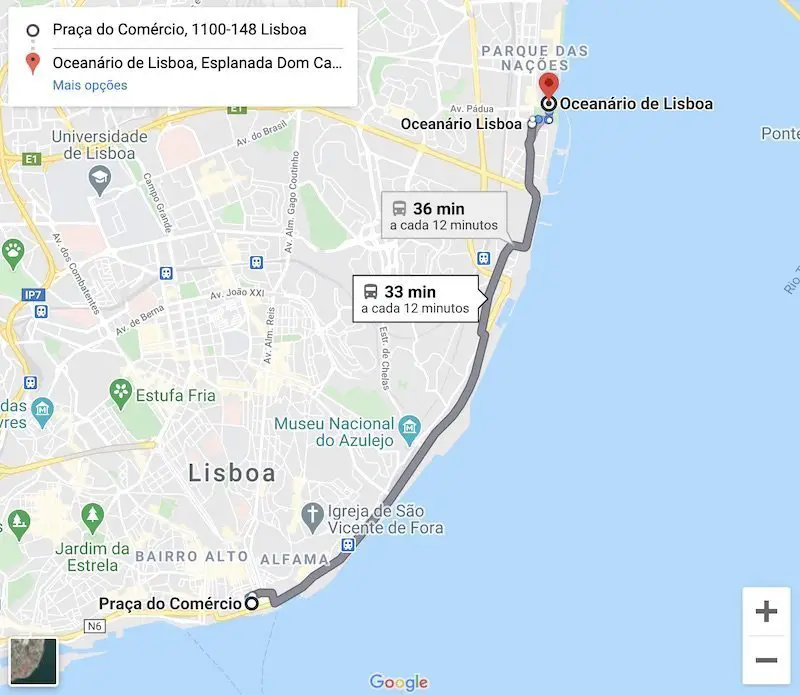
Alternatively, you can take the blue metro line at Terreiro do Paço station (Praça do Comércio) and continue to São Sebastião station where you will have to take the red line metro towards Oriente station.
Where to sleep in Lisbon
Memmo Alfama – Design Hotel ****
Located in a refurbished, late 19th century building in the typical Alfama district, Memmo Alfama – Design Hotel offers its guests a 24-hour reception. It also features a wine bar, an outdoor swimming pool and lovely Tagus river views.
With a themed decoration based on Portuguese tiles, the beautiful My Story Hotel Ouro occupies an 18th century building in the heart of the historic Baixa quarter. Its outdoor esplanade is on one of Lisbon’s traditional pedestrian streets.
Albergaria Senhora do Monte **
Located on top of the highest of Lisbon’s 7 hills, Senhora do Monte offers a panoramic bar with amazing views over Lisbon, the Tagus River and the São Jorge Castle. After a good night’s sleep, guests can enjoy their breakfast on the charming terrace and admire the views of Lisbon.
Information: don’t hesitate to click here to discover all my suggestions for the best hotels in Lisbon.
Where to eat in Lisbon
Traditions and Festivities
The biggest popular festivity in Lisbon and one of the biggest in the country is celebrated in honour of Saint Anthony (Santo António), born in the Portuguese capital in the late 12th century and, according to some sources, died in Italy 39 years later.
This festivity, that takes place in the second week of June, has some unique moments that attract thousands of Portuguese and foreigners – one of the most important events is the popular parades.
With over eight decades of history, Lisbon’s popular parades are already a tradition of this festivity and gather people from the different quarters of the capital in a beautiful ceremony. As usual, the parades take place in the 12th June at the beautiful avenue Avenida da Liberdade where hundreds of participants dance and sing.
Another tradition of this festivity is the famous weddings of Saint Anthony (casamentos de Santo António) that also take place in the 12th June and gather several couples for the celebration of matrimony – Saint Anthony is the patron saint of wedding couples.
However, this festivity does not stop at popular parades and at the weddings of Saint Anthony. At this time of the year, people adorn their houses, streets and alleys with globe basil and other decorations and the smell of grilled sardine is in the air.
When you visit Lisbon, make sure you try the grilled sardines and caldo verde, the popular Portuguese soup, so typical of this time of the year and so tasty!
Of course I couldn’t leave out the New Year holidays in the Portuguese capital. Lisbon offers many and varied reasons for it to be considered as one of the preferred destinations for the Portuguese and foreign visitors.
This is a very special occasion and, in addition to the long-awaited New Year’s Eve and before they welcome the New Year in Portugal, visitors can spend their holidays exploring the historic quarters that, by now, are all decorated with Christmas motifs.
In quarters such as Alfama, Graça, S. Vicente and Mouraria, you’ll feel the warmth of the people living in this cosmopolitan city.
Other points of interest exist throughout the city such as the Christmas Village in Parque Eduardo VII which has been on display every year and is one of the places of choice for everyone and, in particular, for kids of all ages.
The long-awaited last moments of the year are lived in several places in the city but the one that stands out is Praça do Comércio.
In this wonderful square, flanked by Tagus River, you can enjoy live concerts and the spectacular fireworks that will make the delights of thousands of visitors who descended to downtown, the Baixa Pombalina.
But not only outdoor activities are available in the final hours of the year in the Portuguese capital. If you want to and can, there are several places that also offer unique experiences. Look at the examples of several hotels like Pestana CR7, very close to the aforementioned Praça do Comércio.
If you want to spend a different night, you can also enjoy one of the packages offered by both Casino Estoril and Casino Lisboa. Here you can enjoy a fantastic dinner and watch one of the shows scheduled for this special occasion – definitely, a unique experience!
When to visit Lisbon
As you may have noticed, Lisbon is a magnificent city, with many points of interest, a pleasant climate, authentic people, great cuisine and much more. Because of all this, this has been a favourite destination in Portugal for several years.
Find out below what are the best times of the year to visit the Portuguese capital, taking into account, of course, your preferences.
Depending on the weather
Lisbon is a very pleasant city with average temperatures that can vary between 8 ºC in the coldest months and 29 ºC in the hottest months. In this regard, know that the hottest months are July and August, but you can enjoy good weather and pleasant temperatures between the months of May and October.
On the other hand, the months in which it is most likely to rain are November and December; the coldest months are November, January and February, but it is rare for temperatures to drop below 5 ºC.
Depending on the festivities
As already mentioned, there are two months that stand out for their celebrations that attract hundreds of thousands of people: June and December, due to Santo António and the New Year’s Eve respectively. If you want to know how residents of Lisbon celebrate these two occasions, there is nothing like choosing the first weeks of June or the last weeks of December. See how the city is decorated at these times and feel the unique atmosphere that characterise these moments.
Best time to visit Lisbon
If you are not a fan of large crowds, then avoid the high season, in particular the months of July and August as they are the most touristy months and those that attract the most people to the city. But don’t worry because, as already mentioned, you can also get a pleasant climate in the months of May, June, September and October.
Although these months are the best to visit Lisbon, know that this is a city that can be visited throughout the year as it has a unique architectural, gastronomic and cultural richness that can be admired and enjoyed at any time.
The Portuguese capital has several museums with the most diverse collections, World Heritage monuments, a unique gastronomy as well as the well-known fado houses, where you can listen to the musical genre that has become known all over the world through the voices of Amália, Carlos do Carmo and Mariza, among others.
How to get to Lisbon
You can travel to Lisbon by plane, car, train or bus.
If you’re travelling by plane , you can go to the historic centre of Lisbon by taxi, metro or bus. If you choose to take a taxi, it will take you 15 minutes. You can also take the metro at the airport (red line) that will take you to the historic centre of Lisbon. If you prefer to take the bus, check here the available lines.
If you’re coming by car, check here the available parking lots in the centre of Lisbon.
Getting to Lisbon by train is a great option for those who are coming from Porto, Coimbra, Évora or Algarve. To know the prices of the tickets check here.
Bus is a good option if there is no train station nearby. Check here the available lines connecting the whole country to Lisbon.
Getting around in Lisbon
Before you think of what to see in Lisbon you should think on how to go to the different places. The best way to get around Lisbon is by public transportation (metro, tram, bus).
I suggest you buy a day ticket if you’re counting on using public transportation on a regular basis.
Buying this ticket will give you the chance to use the metro, buses, trams and lifts the times you want. Using this limitless ticket starts when you get in a public transport for the first time and lasts until the following day at the same hour.
When you buy this ticket you’ll have to buy the Viva Viagem card that you can use to charge other tickets (daily or single).
If you’re going to use public transportation only twice a day, buy single tickets that will allow you to use public transportation for an hour.
Important: Don’t buy a ticket in the buses and trams because the price is more expensive. Always buy in the ticket machines, in metro stations.
You can also use Lisboa card for public transportation, free of charge :
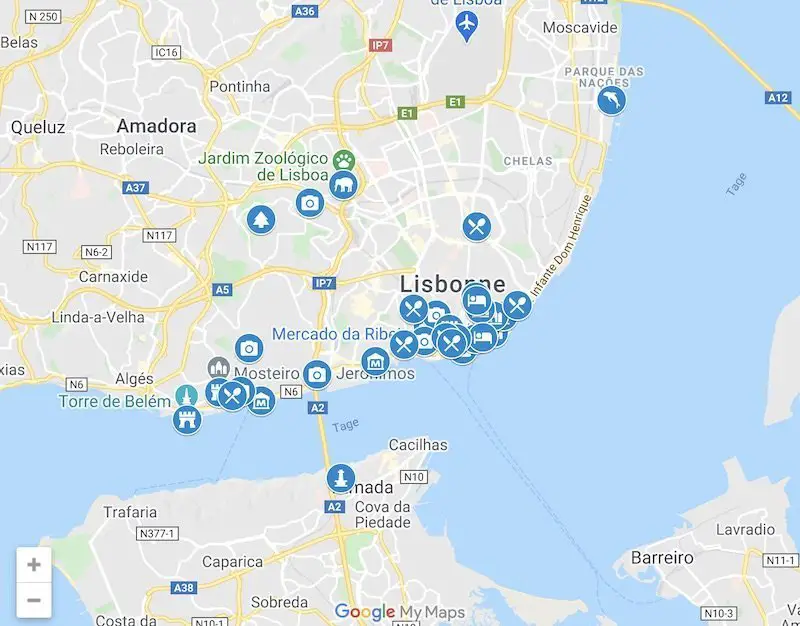
Are you going to visit Lisbon? Then don’t hesitate to book your hotel room, your car or the best activities by clicking the links below. This way you are helping me in the development of my blog and I’ll be able to offer you free tips and travel guides so that you can better prepare your visit to Portugal. Thank you!
What will also interest you:
- Travel guide to visit Lisbon and surrounding area in 7 days
- Top of the best Lisbon day trips
- Top 10 of the best beaches in the region of Lisbon
- Visit Costa da Caparica, a hidden paradise close to Lisbon!
- Top 10 of the places to visit in Sintra
- Weekend in Lisbon: discover the places not to be missed in 2 days

